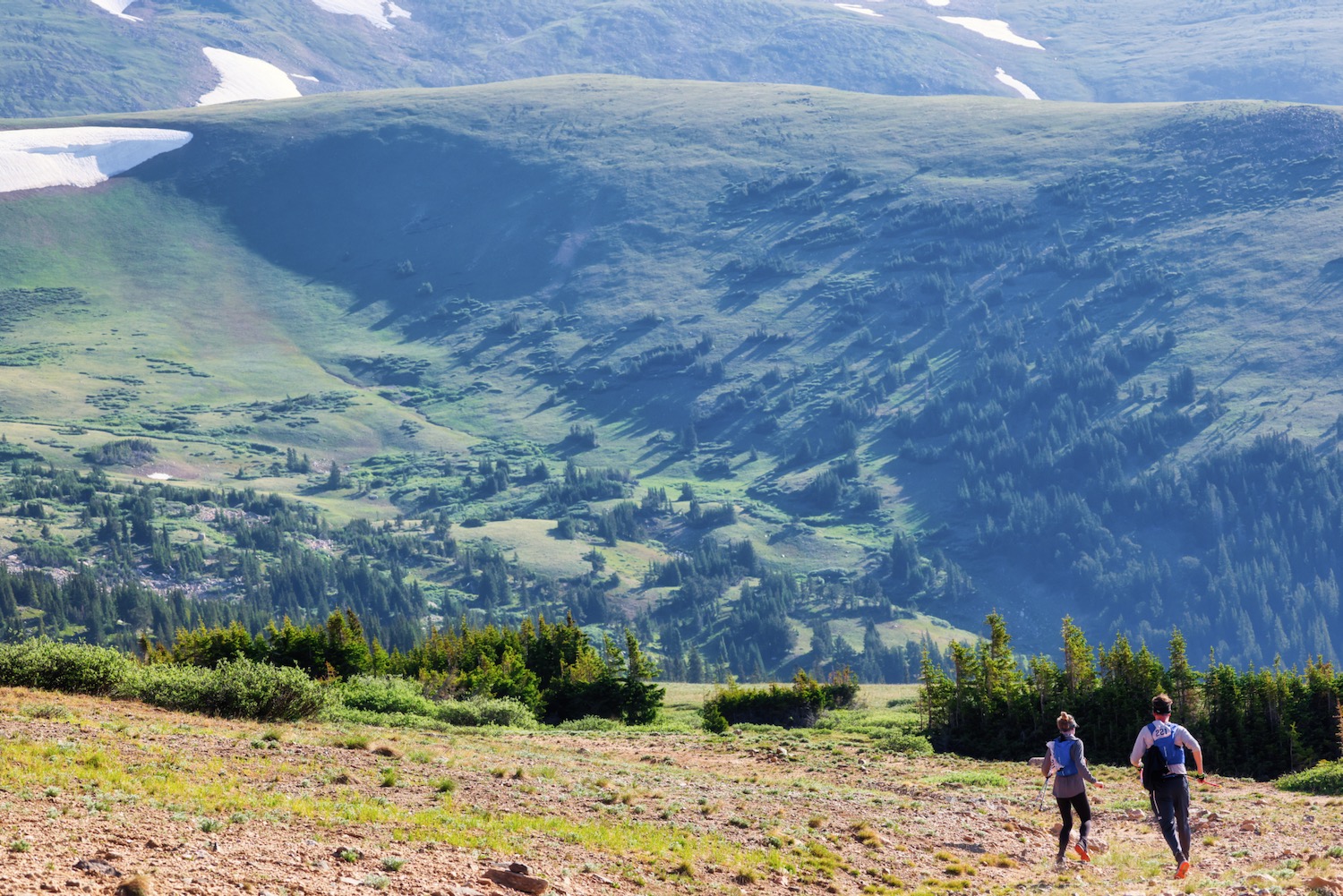It’s the trail series named after a mountain named after a dance hall girl. The titular Silverheels risked her health and legendary beauty to nurse miners during a smallpox outbreak until she, too, contracted the disfiguring disease and disappeared without a trace. In honor of this altruistic figure of western lore, we too risk our health and whatever good looks we may have left by running 100k (65 miles) through the Front Range of the Rockies.
Preparing for Silverheels 100k
Silverheels is our first 100k race. Up to this point, the longest race we run is a 50k (31 miles), half the distance. We try to test ourselves ahead of time with steep and mountainous races such as the Stump Jump and Chilhowee. But it’s hard to get a proper grip of a challenge when not running in the same terrain as the course. And Tennessee is far from Colorado in so many ways.
With so much unknown, we embrace a 100k training plan which we rigorously follow. Any free time is consumed with a progressive load of long runs, speed work, and strength sessions. Unlike past training with a single long run each week, doubling the race distance now doubles our long run days. We now have two back-to-back long-run training days. The second one allows us to split the load of miles run while also forcing us to run on fatigued legs.
And there is another fatiguing factor that we had not anticipated. We pick a summer race in Colorado, anticipating stunning views and mild weather on race day. Unfortunately, that overlooks the months of sweltering weather we endure closer to sea level while training. We wake as early as possible for each long run to beat the heat, but each run inevitably concludes in dizzying humidity.
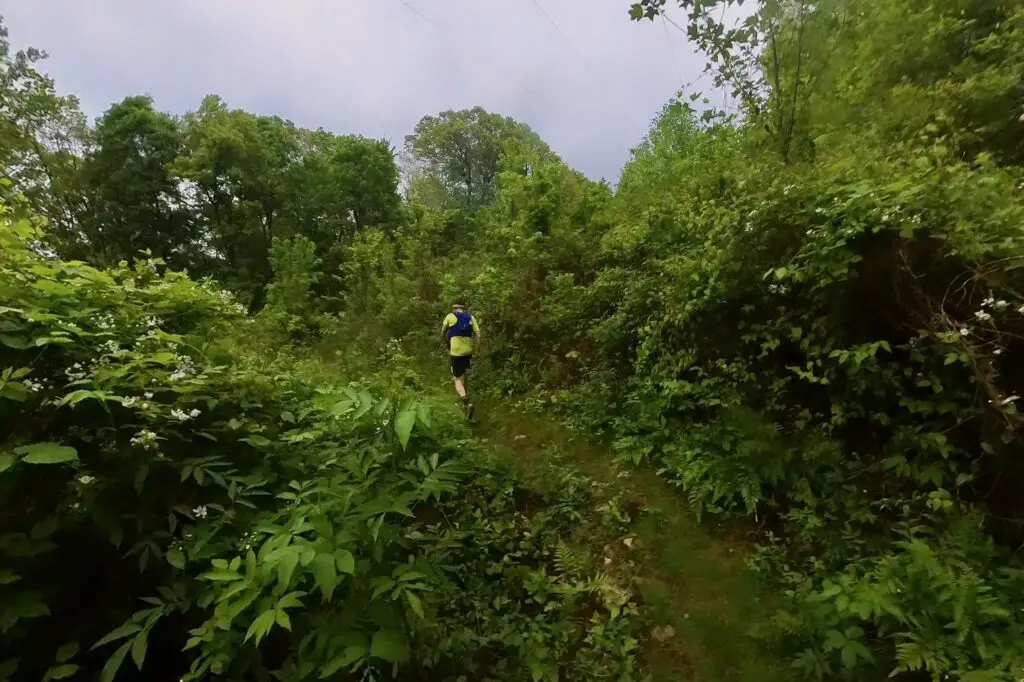
The Poor Man’s Altitude Training
As miserable as the heat and humidity may be, it potentially comes with its upside. We are training near sea level for a race above 10,000 ft elevation. Elevation can be such a stressor that unscrupulous visitors can become dangerously sick. Mild efforts at sea level can spike the heart rate and prematurely exhaust your body at elevation.
Heat training has long been referred to as “the poor man’s altitude training.” It is still an environmental stressor, and adapting to handle heat can at least offer practical insights into the performance implications of such stress during the training cycle.
Granted, we are not relying on heat alone to prepare for the altitude. Our bodies can adapt to altitude, given enough time. Like so many aspects of the human body and athletics, though, there is no universal time elapsed that guarantees perfect acclimatization. The longer you have, the better. But, in the course of our research, we find that two weeks tends to be enough for the average person to be mostly acclimated. Conveniently, this is also the amount of time we will be tapering our efforts for the race. So, we plan to wrap our final long run on our way to elevation and use our two-week taper to acclimate to elevation.
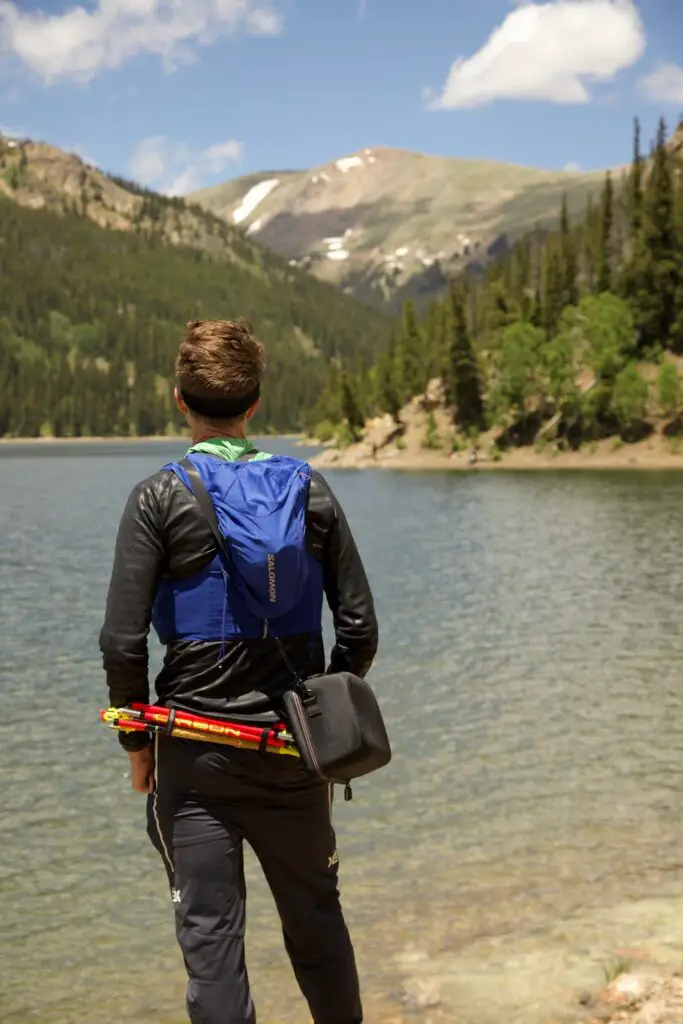
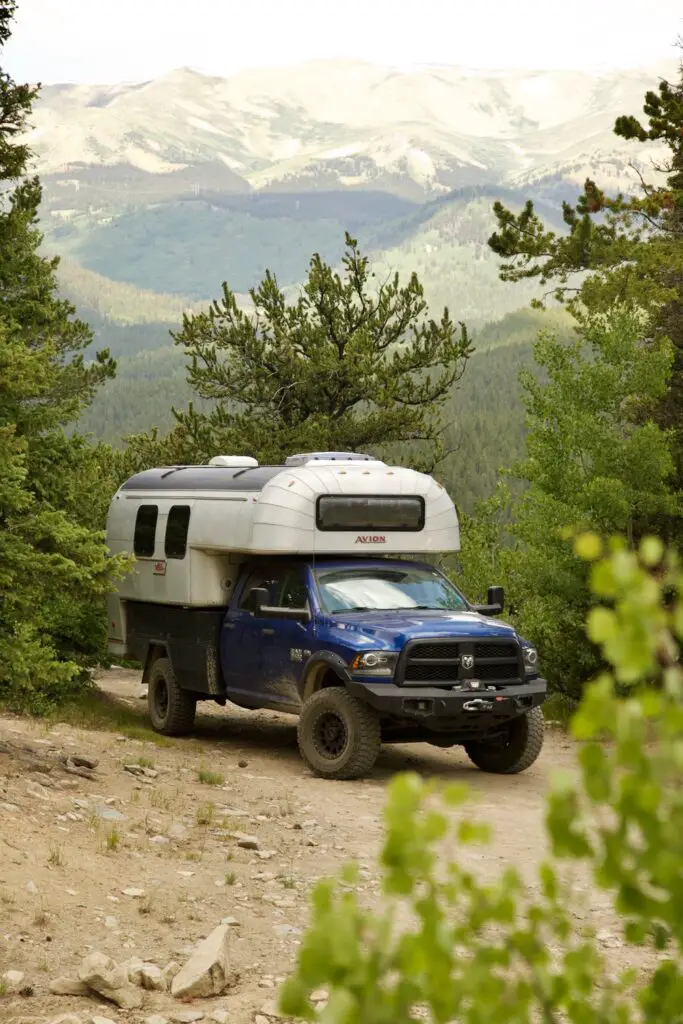
Training on the road
Our peak long run is split into two back-to-back running days, 22 miles on the first and 20 miles on the second. We are already on the road, headed out to Colorado. The first run is through Land Between the Lakes in Kentucky. While it is a delight to explore new trails that we have never run before, we rely on the maps available, and, in this case, we quickly find that the trail we start on quickly devolves into a wilderness of fallen trees and high grasses. Fortunately, there are enough trails to improvise and complete our 22-mile run.
We even encounter a mid-run rangers station with a heavenly cold Pepsi Zero, and we’ve been chasing that dragon ever since. No beverage has ever tasted as good as that sweet carbonated goodness in the middle of an oppressively sweaty run. It even beat out the mango slushy we shared at the end of the run.
Lake Wappapello
On day two, we rise in Missouri, and the experience of the run sounds similar to the state name. The trail is minimally maintained, but we lack alternatives this time around. We slosh through spongy land and creek crossings, hunt for a vanishing trail, wobble on off-kilter terrain, and search for any opportunity to refresh our rapidly dwindling water stores. At one point, we encounter a ranger station without water fountains. Fortunately, the ranger on duty lets us hop behind the counter to fill our flasks with her water cooler. Even so, we finish dehydrated, with a heel blister and more than ten ticks. The muscles around my ankles are thrashed. To me, it’s a good thing. The taper is on, and now is an opportunity to allow my muscles to heal and, hopefully, strengthen for race day.
My dreams, on the other hand, will be haunted by the specters of ticks for weeks to come.
I have never been more grateful to complete a training cycle.
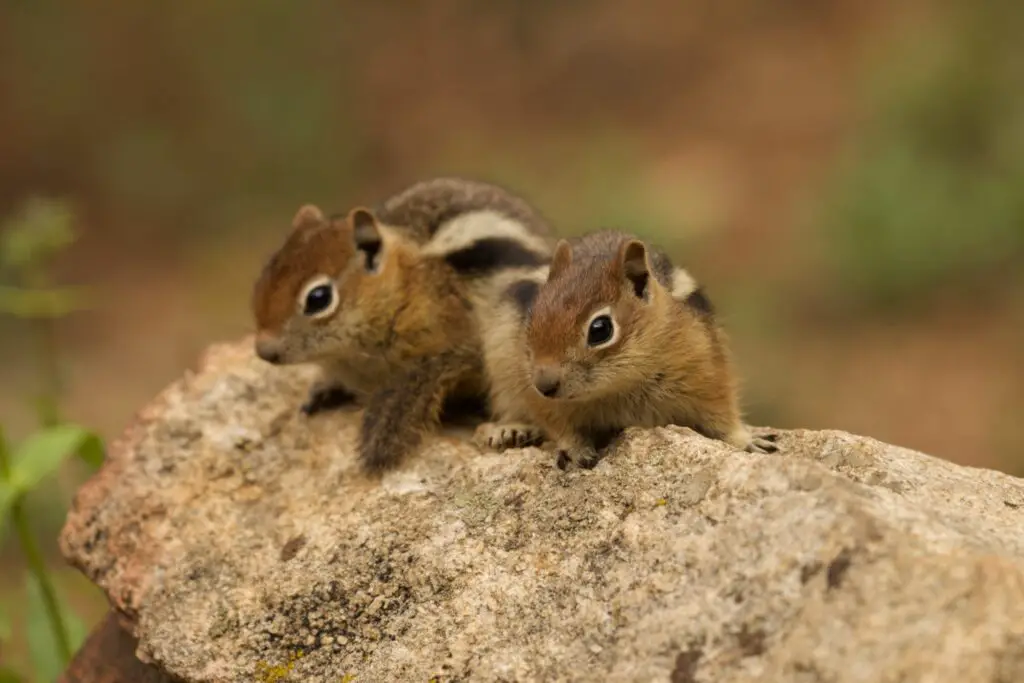
The Taper
From here on out, we abandon the training plan and work to feel. Rather than miles run, sleep becomes our overriding priority. With a race start of 4 am, we know we won’t start with a full night’s sleep, but we can promote muscle recovery and maximize our rested state by going to bed early and sleeping as late as our bodies will allow.
We reach elevation on Saturday evening and establish a campsite base at Kenosha Pass (10,000 ft elevation). On Sunday, we take our first tentative hike. And it is tentative. We walk a slow two miles and quickly see our heart rates spike.
The following week, we train by hiking portions of the route. We don’t manage to hit every part of the route and prioritize potential problem areas: peaks, sections we know we will be running in the dark, and known rough terrain. By the time we are a week in, we feel comfortable speed hiking the inclines and running the declines, tackling the three most challenging ascents on the course.
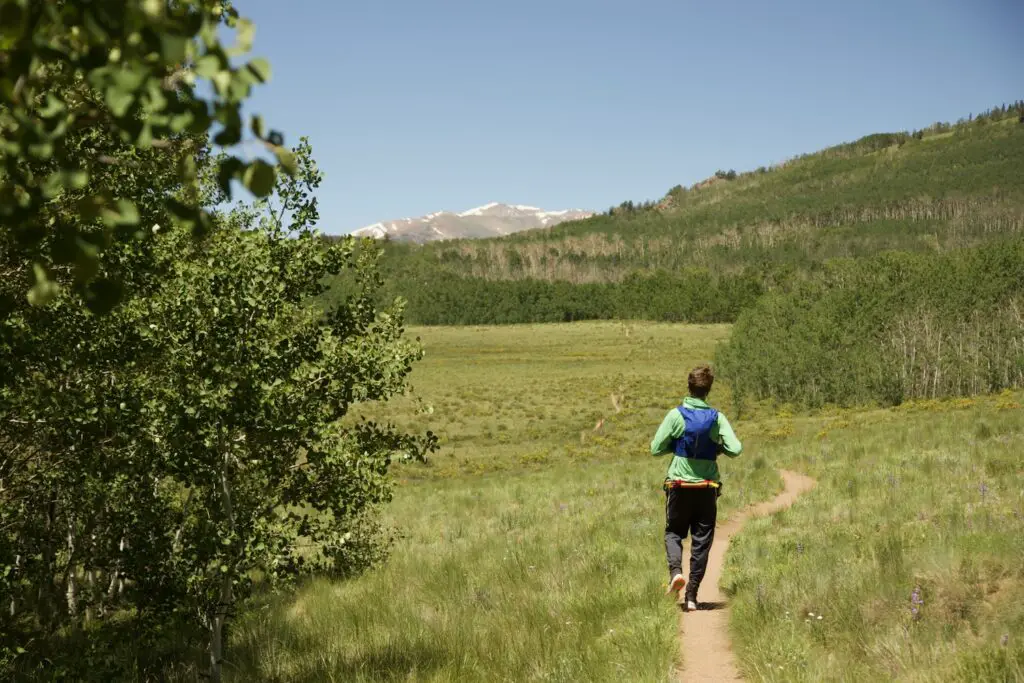
Fueling & Resource Management
While testing different fueling strategies throughout our training, we quickly discover that our bodies respond differently at altitude. We need more water to stay hydrated at altitude. The dry climate compounds this issue by quickly wicking away our sweat so we don’t have the same feedback cycle as we become dehydrated.
Climbing French Pass, we see how quickly we slurp through our water. We will almost certainly tackle this section in the heat of the day. Our usual two flasks will not suffice from the Michigan Creek Aid Station to the French Gulch Aid Station. Fortunately, Michigan Creek is also the first aid station that supports drop bags. We’ll pack additional flasks to fill for this section.
| Aid Station | Mileage | (D)rop Bags, (C)rews, (P)acers |
|---|---|---|
| Beaver Ponds 1 | 6.8 | Water only |
| Beaver Ponds 2 | 12.7 | Full service |
| Georgia Pass 1 | 19.4 | |
| Beaver Ponds 3 | 25.4 | Full service |
| Georgia Pass | 32.1 | |
| Michigan Creek | 37.8 | D, C |
| French Gulch | 47.4 | D |
| Boreas Pass | 56.1 | |
| Tarryall | 60.6 | D, C, P |
| Finish – Como RH | 65.78 | D, C |
Practical
For the rest of the week before race day, we move to Fair Play, the “big city,” where we stay at an RV park with warm running water for showers, laundry, and an easy walk to a market. After over a week in the woods without running water, it’s pure luxury.
We continue to hike for a couple more days. On Wednesday before the race, we visit the local outdoor mining museum for a leisurely walk instead of training.
On Thursday, we set out for Como, Colorado, the race finish line and the campground for many of the people who will be running Silverheels. We arrive early and volunteer to help organize food for the aid stations. We take a nap, eat an early dinner, attend the mandatory 100-miler & 100k meeting, and go to bed immediately after.
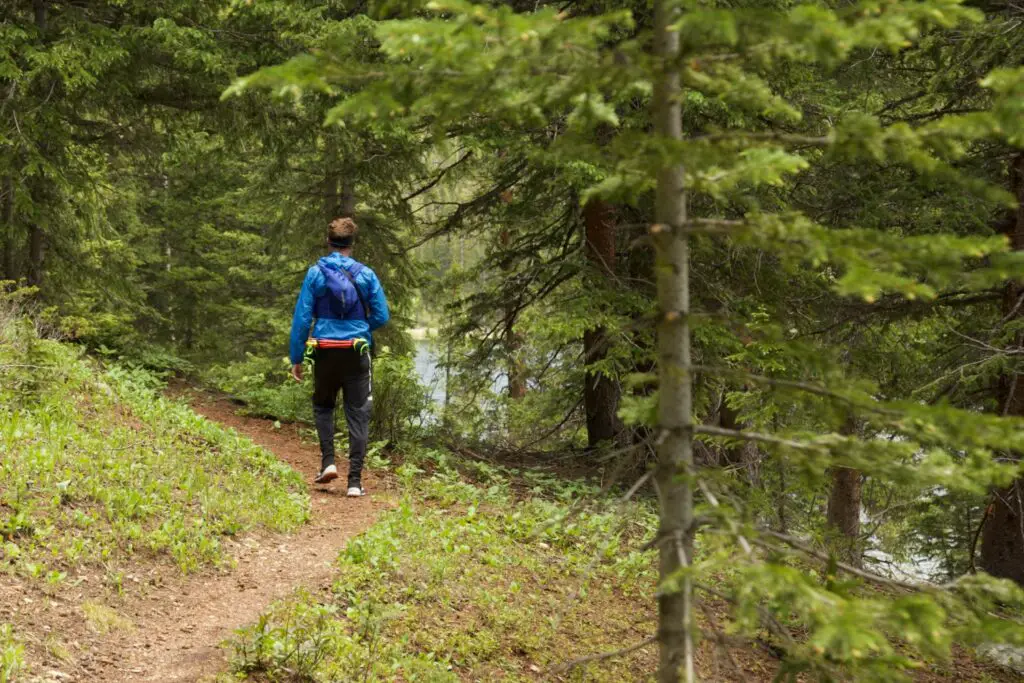
Race Day
We wake at 2 a.m. The night before, I prepared oatmeal and set it at our bedside. We scarf our breakfast down as we dress. I also taped my feet the night before to avoid feeling rushed. Along with my long-sleeved running shirt, leggings, and hydration pack, I wear a Selk bag over the whole ensemble to keep warm at the race start. Will people laugh? I hardly care.
Silverheels 100k is a point-to-point race, which means we need to board a shuttle to the start line. I cannot tell you how much we strategized around this 13-mile morning commute. Originally, we had anticipated having a crew that could drop us off at the start. But when they bailed, we were left to fend for ourselves. The shuttle was a much-appreciated last-minute addition to the race so that we could leave our truck (and camper) at the finish line and not worry about where to sleep after the race. Better yet, we catch an early shuttle and have time to use the portapotty at the start and chat with other anxious runners waiting.
Five minutes before the start, I shrug out of my Selk’bag and deposit it at a designated drop-off point to collect after the race and join the crowd near the start line.
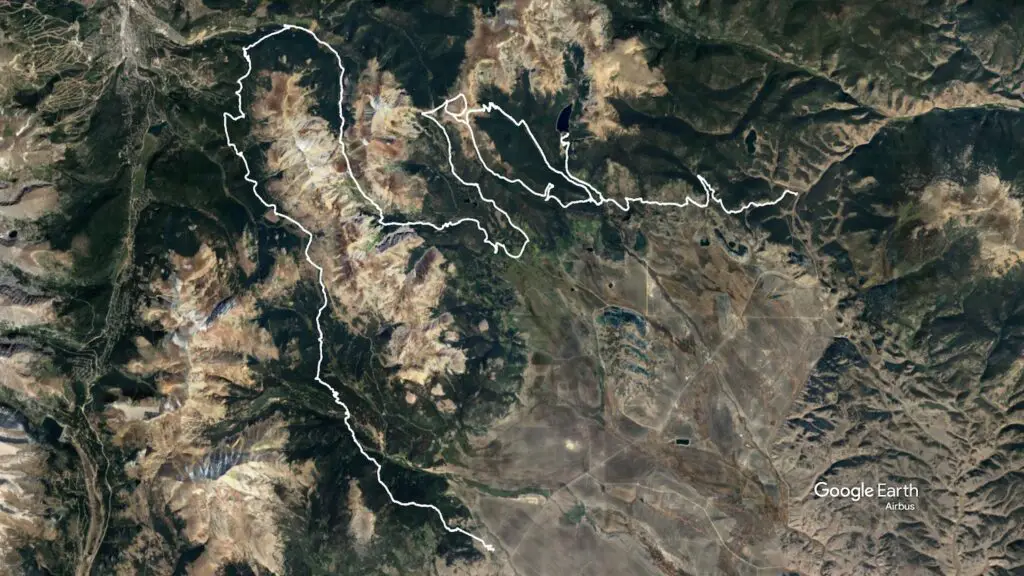
The Race
The rubber chicken sounds, and the race is on. We join the surge into the dark. The first 4 miles of the race is a rolling climb on a rough Jeep road. It’s a convenient start where runners can easily pass each other and establish their initial position before turning down the single-track Colorado Trail.
We keep to our plan: rather than chasing the lead, we insert ourselves at the rear of the lead pack. We take an easy pace, focusing on consistency through the race rather than an early burst of speed. After all, it’s dark, and the last thing we want is to fall at the beginning of the race. Rather than spiking our heart rates, we readily shift into speed hikes on inclines.
Beaver Ponds Aid Station
Seven miles in, we encounter the first aid station. Oh, you seductive aid stations with your cookies, candies, sweet, sweet hydration, and friendly volunteers to ensnare us in conversation. Not today! We fill our bottles and charge up the first steep incline to Jefferson Lake. Originally, the course had us run around the lake. We even hiked the route early in our taper. It’s beautiful but has the roughest terrain of the entire course, with rocky vertical scrambles and several water crossings. I was so happy when it got cut. Instead, we run up to the lake, take in the view, and back down to that alluring aid station. (Cookies, quesadillas, and watermelon, this time with refilled flasks)
Now, the course gets gnarly as we climb four miles up to Georgia Pass. A team of runners from Mexico City are participating in the 100k and 100miler. We catch one of the runners just as he’s about to take a wrong turn and chat with him about the race and his team for a while until we gradually settle into different paces.
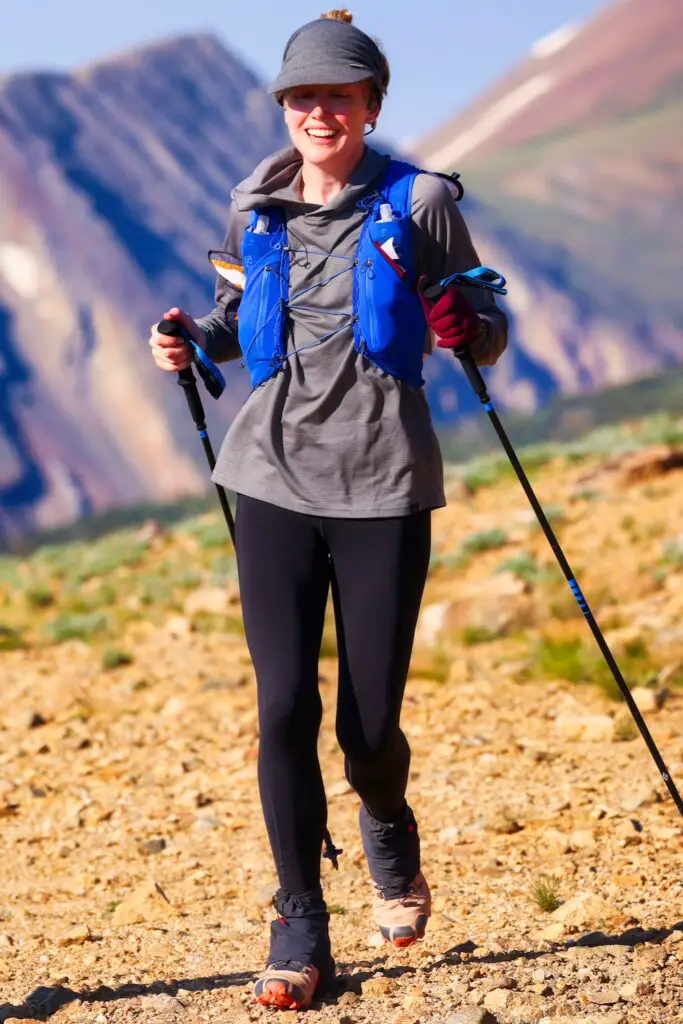
Georgia Pass Aid Station
As we leave the tree line on our approach to Georgia Pass, we already feel the early signs of what the weatherman had threatened: it will be a warm day. The sky is clear, and the sun shines hard on the rocky terrain. It’s excruciating to reach the Georgia Pass Aid Station and know, as happy as we are to grab another round of quesadillas and watermelon, that we will now be heading back down along the Colorado Trail to that other, taunting Aid Station only to climb this same incline once again.
The second time around, it’s noticeably hotter, and I start to worry about our pace. Like many runners, I have multiple tiered goals:
- Goal A: Finish in daylight (sunset is at 8:30)
- Goal B: Finish without falling (or any serious injury)
- Goal C: Finish
- Goal D: Stay out of the hospital
Goal A is not entirely out of the question, but it’s getting less and less likely with our current pace. We try to be efficient at aid stations, but filling our flasks and pockets with nutrition takes time. At least with our second ascent of Georgia Pass, we are halfway through the race and on to a new trail. We descend a mix of maintained and unmaintained dirt forest roads. With the relatively smooth grading, we can make good time as we descend to the Michigan Creek Aid Station and our first round of drop bags.
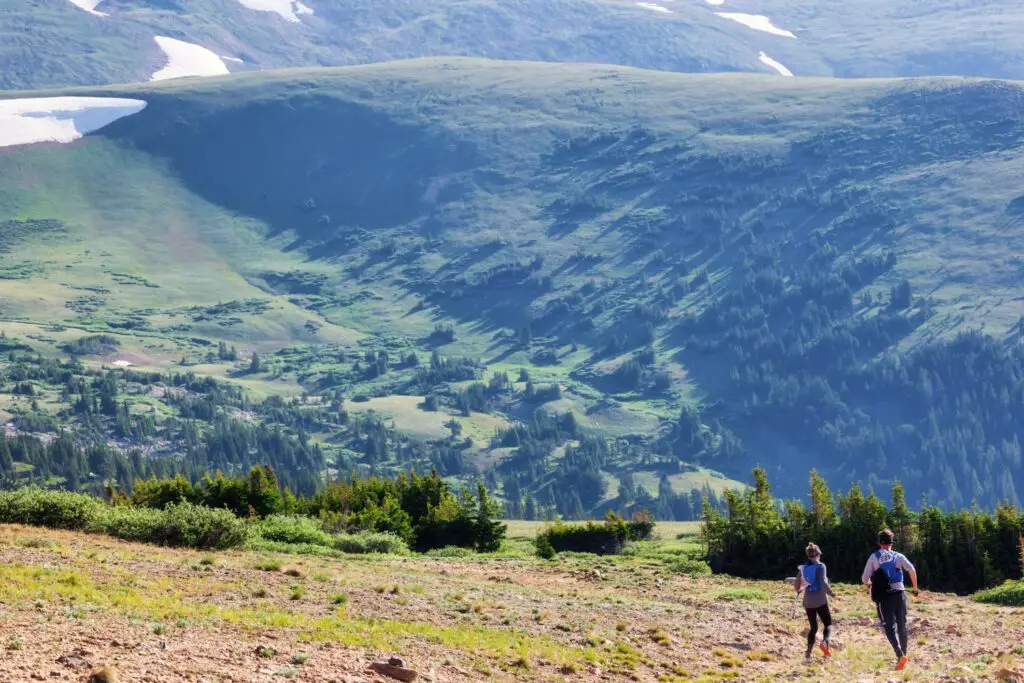
Michigan Creek Aid Station
Here, along with the customary hydration and snacks, we pick up an additional set of hydration flasks prefilled with caloric powder; just add water. After all, what’s coming up next is the most challenging summit in the heat of the day: French Pass. This is the climb we identified as a hydration risk when scouting the trail a week before.
We speedhike up the trail while eating our goodies from the aid station. Just as we are about to turn off a dirt road onto single track, a dirt bike overtakes us. A runner behind us finds Chris’s gloves and baggie of snacks and passes them to the biker for us. That is a close one, but it is a testament to the spirit of this race, where a runner behind us really has our backs.
I’ve heard a lot about the weather in the Colorado Mountains: cautionary tales of how a clear day can transform into sleet or hail midday and clear up by evening. So, when I see a front of clouds gathering around the summit of French Pass, I pick up the pace. We need to summit now before lightening could force us to descend and take cover. I’ll descend when we are on the other side of the pass.
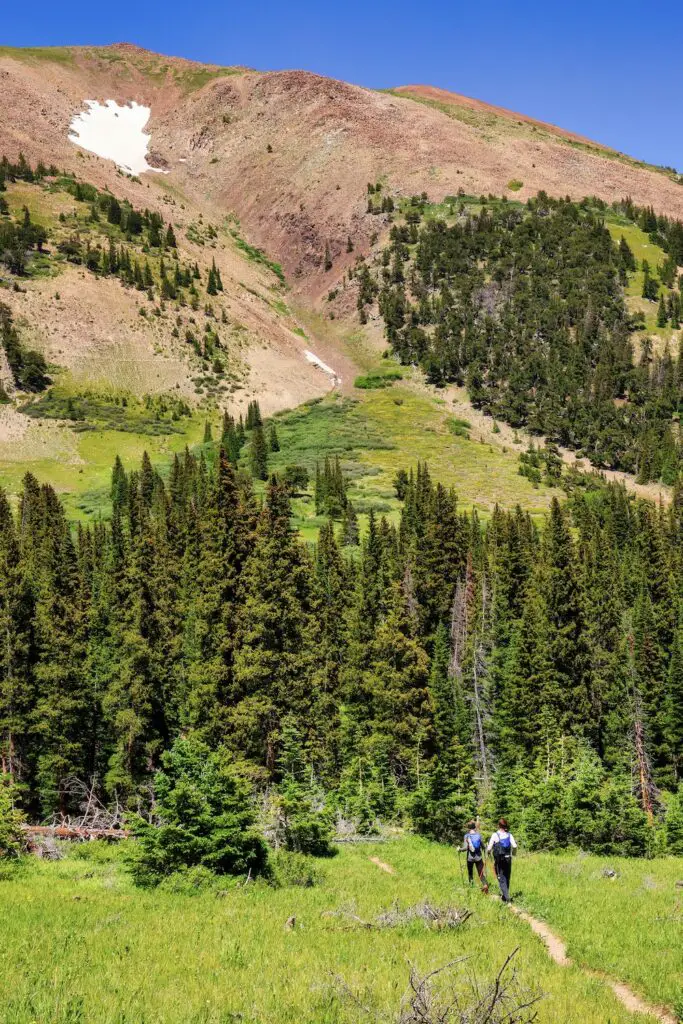
The wheels are coming off…
Chris commented about his feet a few times earlier, but now he’s getting louder. By the time we summit French Pass, our new concern is not lightening; it’s blisters. We have four miles of downhill ahead of us until we get to French Gulch and the next aid station, but we aren’t running the downhill. Instead, we gingerly walk and gauge the next steps. We are two-thirds of the way to the finish. That leaves approximately 20 miles on our feet.
We wore Gortex shoes for this race because we were told that this part of the trail was flooded. While encountering a few minor water crossings, we never fully submerge our feet. Instead, while the Gortex keeps the water out, it’s also incredibly effective at keeping in perspiration. My feet are managing fairly well, but Chris’s stew in sweat, only accelerating the buildup of blisters.
With two miles to the next aid station, we finally hit a dirt road and trot to a cheer squad of volunteers. We pass two walkers who are both out of water. I’m grateful that we planned our hydration strategy well, thus far, but we have our own problems ahead of us.
This was a long, hard stretch and signals a turning point in our race.
French Gulch Aid Station
When I first scoped out this race, I considered this point to mark the victory lap. While there is still some uphill, it is all very gradual, with well-maintained trails and many forest roads. It’s easy.
But, as we sit for the first time at French Gulch Aid Station and change our shoes, a different situation becomes unavoidably clear: these blisters are brutal. And, while I urge Christ to take the time to pop them, he wants to hurry up and finish this race. Of course, there’s no such thing as hurrying with blisters that big and twenty miles still to go.
Nutrition Strategy
I feel the mileage in my own way as well. At each aid station, I refill my flasks and grab some fruit and a quesadilla. The warm cheese and tortilla are a treat. But halfway through eating the one from French Gulch, I have trouble mustering the saliva to break down the tortilla. I quickly find I’m having trouble eating anything solid outside of watermellon. French Gulch was another drop bag pickup, and along with a fresh pair of shoes and socks, I picked up another bag of snacks, salt pills, gels, and a baby food packet. How do I forget about that? I carry it for 20 miles when it is probably one of the few things I can eat at that moment. I’m still kicking myself for that.
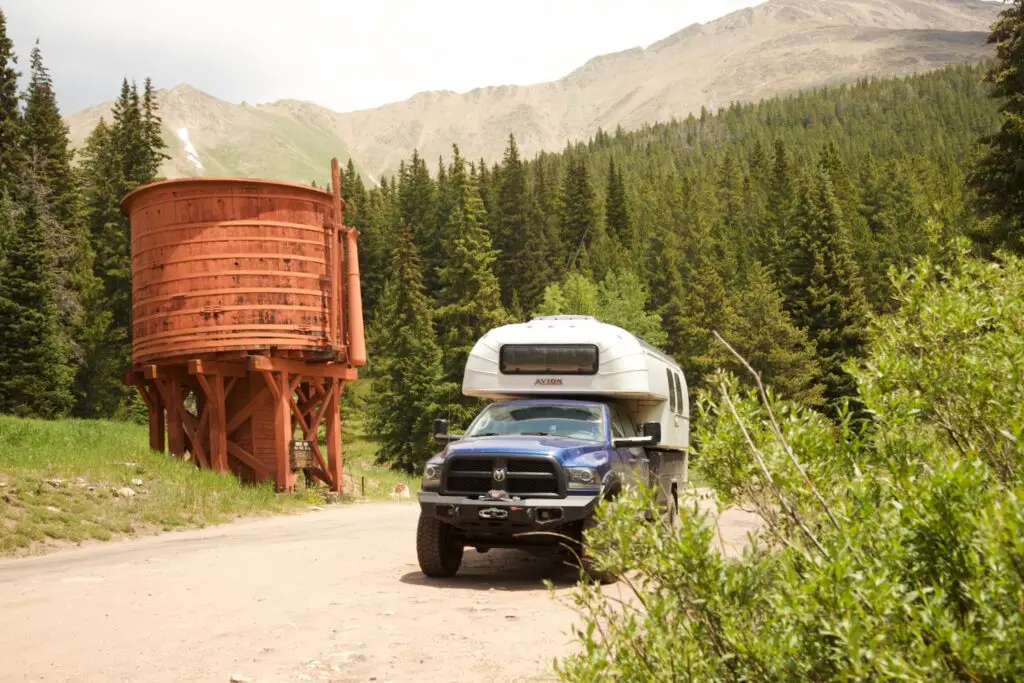
Sally Barber Road
I was right about one thing, though: the hills are mild. We alternate between walking and a gentle trot as we meander between single-track and dirt forest roads. This would be an easy scenic run on its own. But today, it’s rough. It doesn’t help that, despite my undeniably dehydrated state, I need to void my bowels. Liquid swishes in my gut, and I am laser-focused on the facilities at Boreas Pass Aid Station.
Here is another quirk of this race: the course winds through multiple districts with varying rules. Until our final aid station, we have to run with a wag bag. And, if nature calls, all solids have to go in said bag. With every fiber of my being, I do not want to carry a used wag bag to the next aid station. And so I march with a steely-eyed determination that disregards blisters, dry mouths, and fatigued muscles.
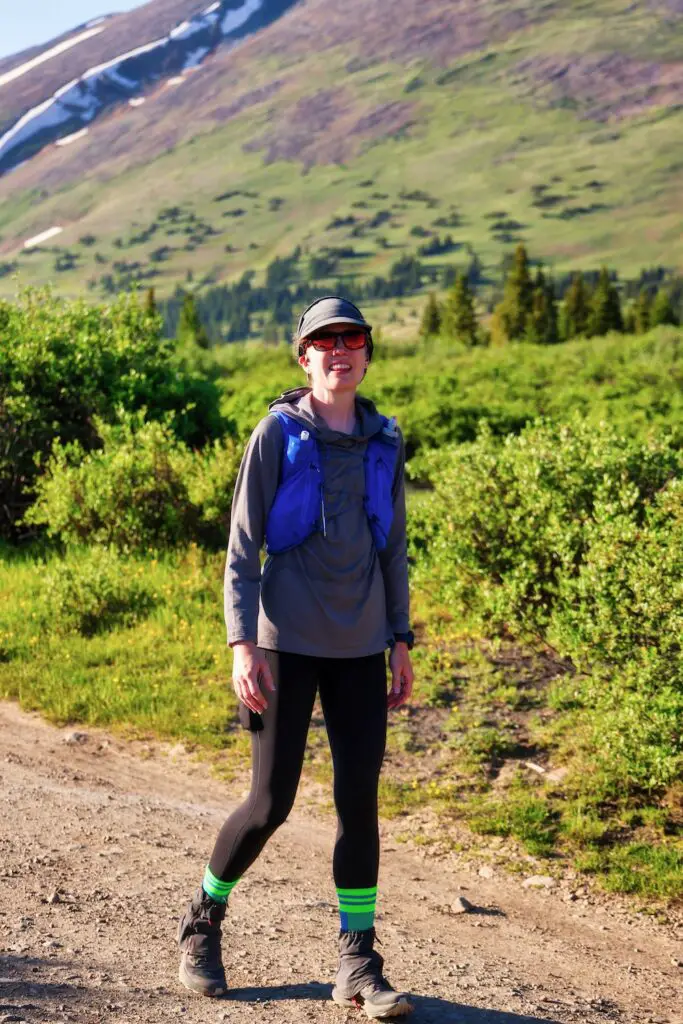
Boreas Pass Aid Station
It’s not until I reach Boreas Pass that I learn that this is not one of the aid stations equipped with a portajohn. No, they have a bucket. But that’s good enough for me. We have climbed our final pass, and now all I can think about is the finish line and the waning light.
After violating the innocence of the poor Boreas bucket, it’s downhill on the Gold Dust Trail. As an extra plus, we are back on some trail that we had scouted a few days ago. It’s comforting to recognize landmarks and anticipate the final aid station between us and the finish line. We trot down a gentle grade.
A few miles from Tarryall Aid Station, we catch up to a couple of runners. I start to encourage them with “You’re almost there!” when I realize these guys are running the 100-miler. They still have 40 miles to go. I settle for some nearly incoherent niceity as I realize my dehydration is as counterproductive to my speech faculties as the rest of my body.
Tarryall Aid Station
The sun is setting as we reach Tarryall Aid Station. We have six miles to go, a distance that would usually be less than an hour, but as I look at the sky filling with pinks and oranges, I know we won’t be making our “A Goal” of reaching the finish in the daylight. While we do have drop bags here, we packed them with the worst-case scenario in mind: if we need a drop back 6 miles from the finish, it means we are in trouble and at risk of not being able to finish. So we packed extra layers, coats, and pants. All of which we leave at the aid station, opting instead to fill our bottles and grab some fruit. I can’t eat anything dry. That baby food is still in my pack while I’m talking about needing wet food with the volunteers.
On to Como
While the aid station workers continue their siren song, offering chairs and more warm food, we strike out to finish what we began 16 hours ago. We cross a swampy stretch where we have seen three moose in the past. This time, all we encounter is a photographer. We climb up a ridge through a pine forest. The scent is strong after baking in the hot sun all day. As night falls, our world narrows back within the beams of our headlamps. Whispers of wildlife haunt the edges of our perception. Was that a squirrel or something bigger?
Blistered feet, fatigued muscles, rocky terrain, and several fallen trees have us gingerly stepping through the forest. We ran part of this trail less than a week ago. At that time, we turned around at the peak. Now we look for unfamiliar landmarks, signals that we have finished our final climb and everything will be downhill. But in the dark, nothing is familiar. It’s only after a period of sustained downhill and a particularly troublesome downed tree that we know we sumitted some time ago. I count down the miles—the fractions of a mile.
Not what we expected
With one mile to go, we settle onto a dirt road into Como. It’s wide with a gentle downhill. We trot down the road. Half a mile to go. One quarter. We are…here?
It’s dark. We are at a gate that could lead to the Roundhouse, where the finish line is, but this is not it. I stop, pull out my phone, and, for the first time, turn off airplane mode to get a signal. Where are we? We are a block and a half from the Roundhouse entrance. We back out a block and turn onto the main road, finally turning down the Roundhouse entrance and crossing below the illuminated sign for Silverheels.

After the Finish line
It’s dark, nearly silent, except for the volunteer manning the finish line. Womanning? She asks our bib numbers, writes down our finish times, and then looks up. “Oh! My friends!” She was the woman who drove us to the start line. How poetic that we get to see her at the finish. “Not that it matters,” she comments, thumbing through her clipboard, “but you two finished 6th.” Chris is the one who asks, “How did she do?” Nodding over at me. She looks down, “You’re the second female.”
I know whose first; she’s the only woman who passed me. It’s not until the official race results come out a few days later that we’ll look her up and see that she set the FKT for Mount Whitney several years back. I was never in her league, but I got to share the course with her this time.
All I want to do is sleep
We take our finisher medals and limp to our campsite. Yesterday, I laid out warm, dry clothes and wet wipes to clean off. We had food to kickstart our recovery. But neither of us cares about the day’s sweat and dirt. And who has the saliva to eat anything? We change into soft clothes and tumble into bed.
I think I did get in an hour or two of sleep before the coughing starts. At first, they are just small coughs, but over time, they grow to wrack my whole body. Chris also spasms next to me with coughing.
All that dirt. The dust kicked up by jeeps speeding by us and inhaled as we took any dirt road as an opportunity to run hard and bank time. After a day of silt settling in our lungs, our bodies struggle to expel it. I don’t know how long we spend coughing. I wonder how many other people are coughing in their tents and cabins after picking up their finishers medals.
Silverheels, Day 2
The next morning I wander out to pick up our drop bags and cheer the 18 and 10 mile runners who are only starting their races. I join the crowd waiting at the finish and clap as the 100-mile runners begin trickling into the finish. Chris stays in bed. He suffered through 20 miles of blisters, and now his feet will have their due.
It’s not until nature’s very insistent calling that Chris gets out of bed. We thank the volunteers, catch a picture at the finish in the daylight, and tumble into the truck to drive back to the RV park in Fair Play for one last night of hookups and hot showers.
As calorie-deprived as we are, we have no appetite, and our tastes are bland. We know we should eat so I prepare a meal of chicken and rice. We eat most of it and focus on a different aspect of recovery that comes much more easily: sleep.
Looking back on Silverheels
100 kilometers in the Colorado Mountains is a profoundly different ball game from our past experiences. We trained hard, but it was a hard race that demanded the training. In one day, we ran 66.5 miles in 18 hours and 31 minutes. We climbed 10,245 feet of elevation, ping-ponging between 10,000 and 12,000 feet. The race inspired our greatest efforts to this date and exposed our vulnerabilities. And we’ll take it all into account as we train for future races and build up to that magical distance of 100 miles.
Lessons learned:
- Acclimatization makes a world of difference when running at elevation. The difference between one day, one week, and two weeks at elevation is dramatic, and I would have worked harder to make even more time at elevation if I had known what a difference it would make.
- Scout the course (if you have the chance). We have run races on familiar and unfamiliar terrain. But even a limited amount of scouting can illuminate significant problem areas, such as whether we have sufficient water to travel between Michigan Creek and French Gulch.
- Drop bags are for dropping things off and picking things up. As we progressed between aid stations, our packs got heavier with consumables we failed to consume—like the baby food packet we forgot about. I carried that extra weight to the finish line. In the future, as we approach another drop location, we should consider what we need to take out of our drop bags and what we might want to put in them.
- Taping feet can be incredibly effective, but only if you cover the problem area. While my feet were in far better shape than Chris’s at the finish line, I did have a couple of blisters and in very odd places. Before the race, I taped my heel and the ball of my foot. These are my common problem areas. They turned out to be my problem areas for this race as well. Instead of massive blisters, however, I had a few smaller blisters around the edges of the tape and one strange balloon of a blister where fluid from the ball of my foot traveled to thinner skin between my toes. The takeaway? Tape works and I should use more of it.
- Gortex shoes can keep moisture in as well as out. Tape may have been my pain point, but shoes were Chris’s. In an effort not to harm his feet by getting them wet in a water crossing, they instead stewed in his Gorttex shoes due to the heat of the day. Given that we knew it would likely be a hot day and the water crossing was only a couple miles from the aid station, Chris should have worn the optimal shoes for the heat and terrain and powered through a couple of miles with potentially wet feet. We already planned a shoe change at that aid station.
- The right shoes can make or break a race. No, this isn’t redundant. There was more wrong with Chris’s shoes than that they were Gortex. He had other shoes that fit him better. Running 66.5 miles, we were bound to have some blisters, but the amount that he had to contend with was far beyond what would have been likely in some of his other shoes.
- Carry the water needed for the section covered: Water is heavy. It’s also the most important consumable in our race. We run with two water flasks by default, but our prerace scout revealed that the section between Michigan Creek and French Pass requires more. On the other hand, that didn’t mean we ran the whole race with four flasks. We only filled the extra two on sections we were likely to need them.
- When dehydration kicks in, it’s also hard to eat anything dry. Pack backup gels, fruit, and mashed slurries like applesauce or baby food, are valuable alternatives to crackers and other dry snacks.
On we go
It takes a few days for our appetites to return. We shell out for a hotel over a couple of nights. Partly for the hot tubs. Partly for the luxurious king-sized bed. And partly for the extravagant all-you-can-eat buffet with lobster and crab legs. In the world of casinos, never bet against the house. But when it comes to a casino buffet, bet on the post-race ultra runner every time.


